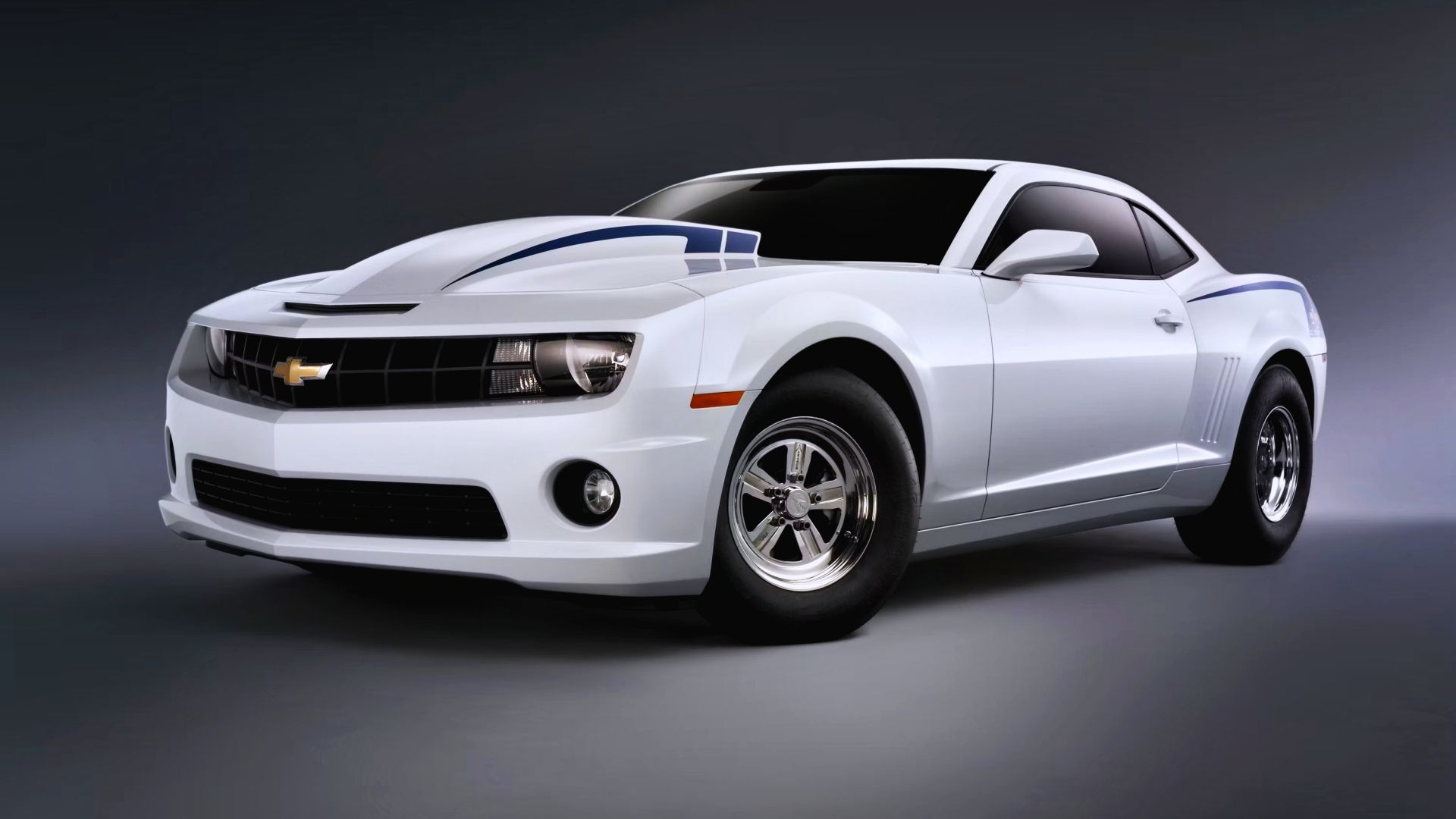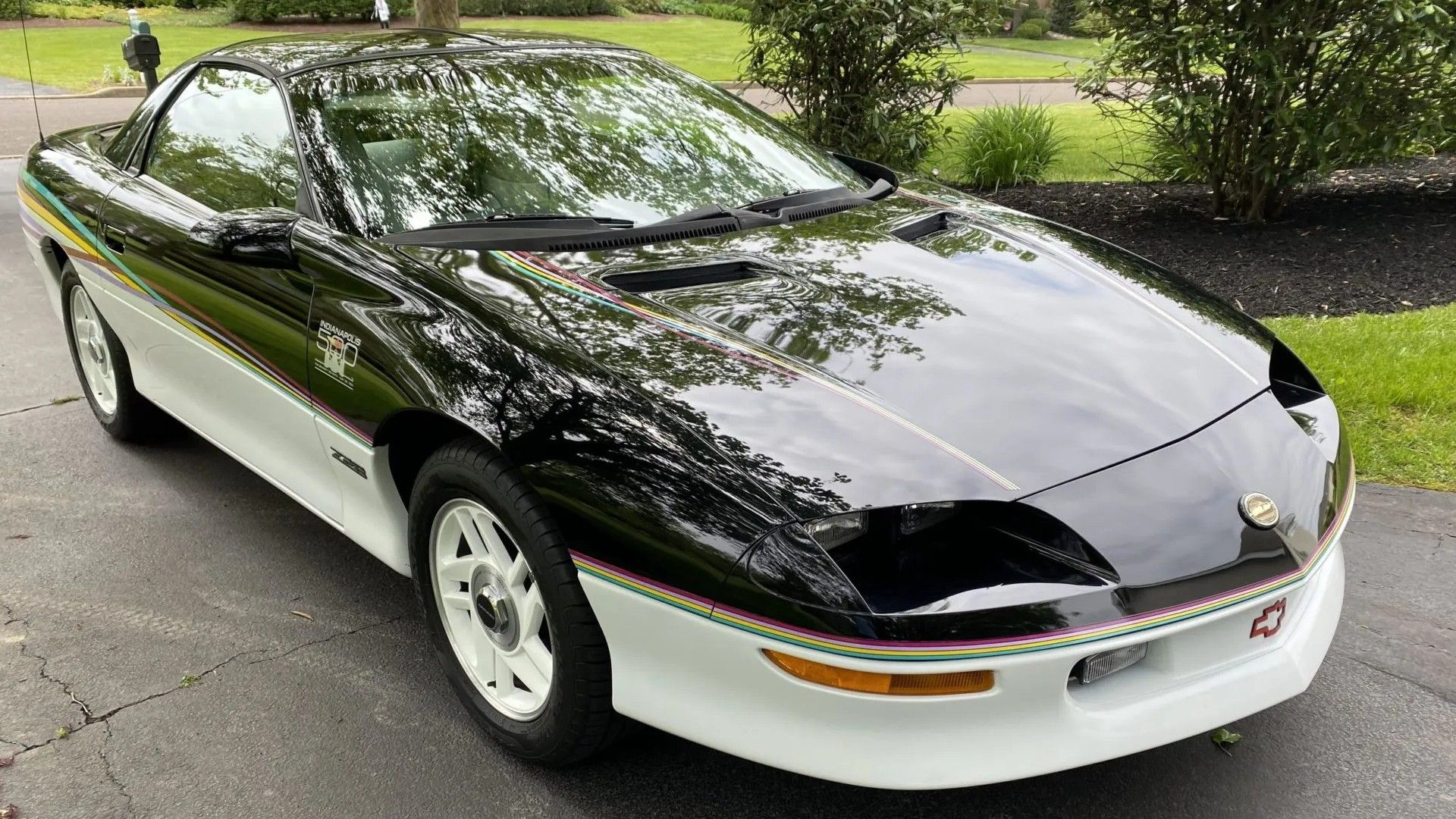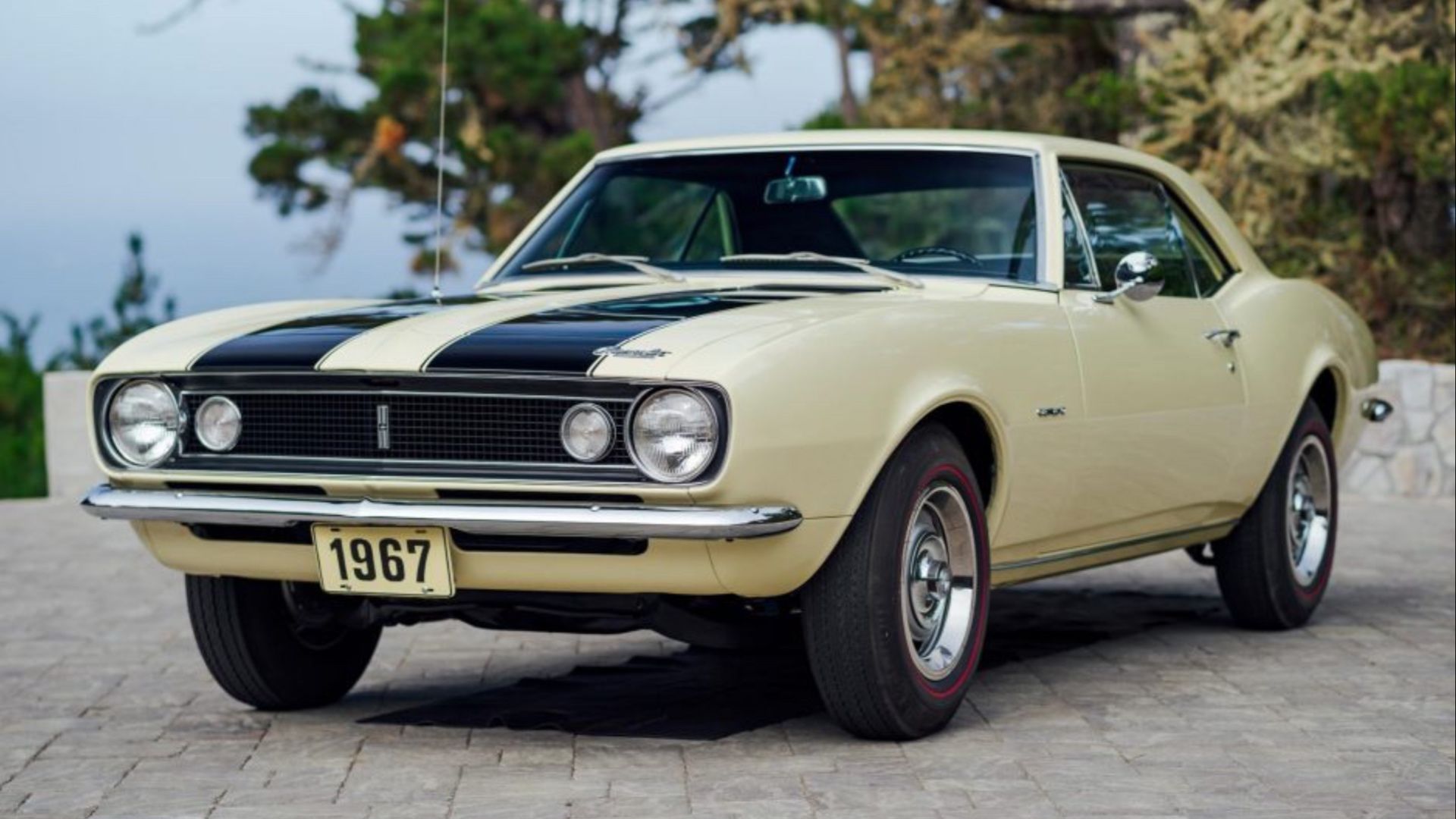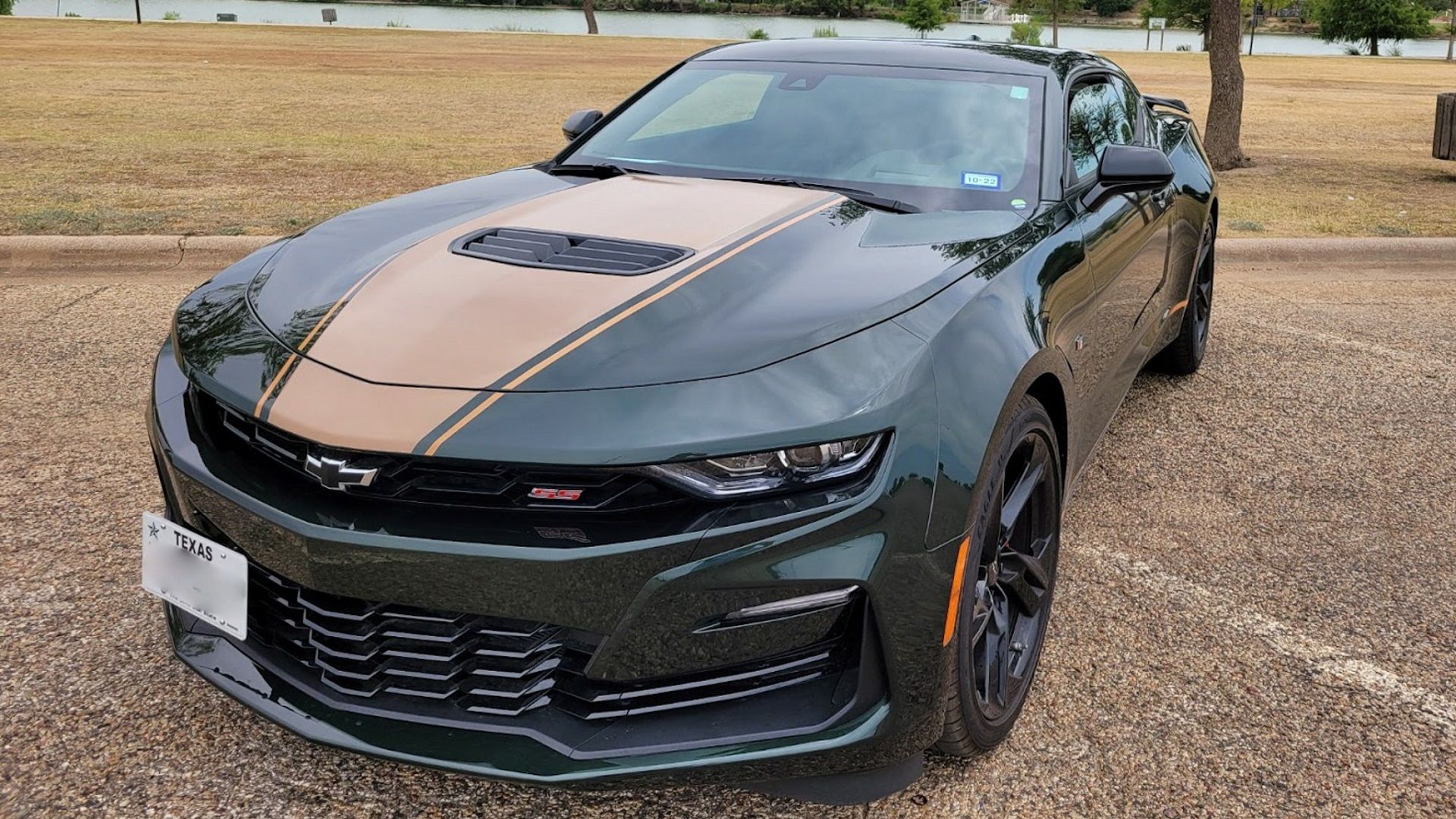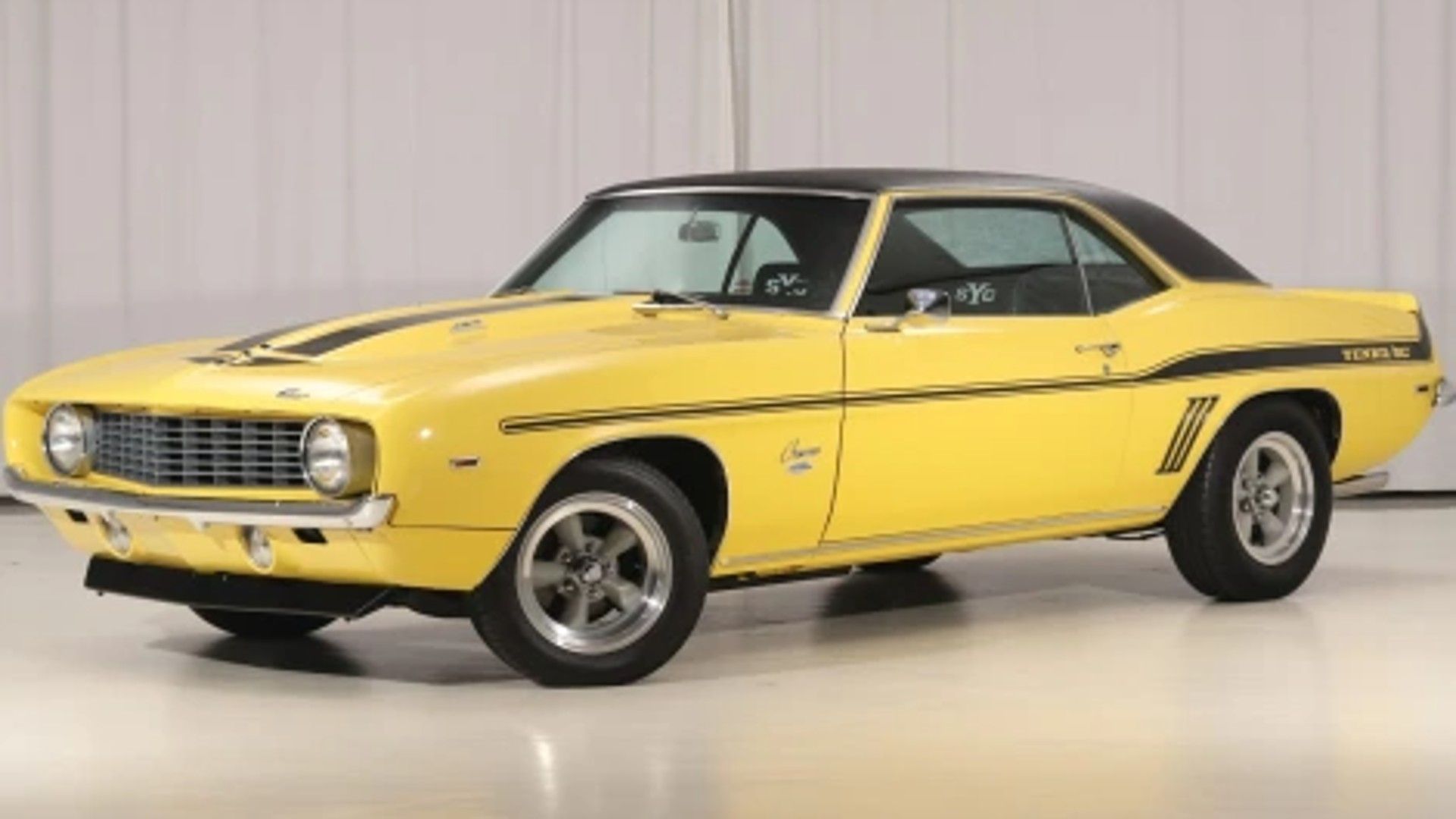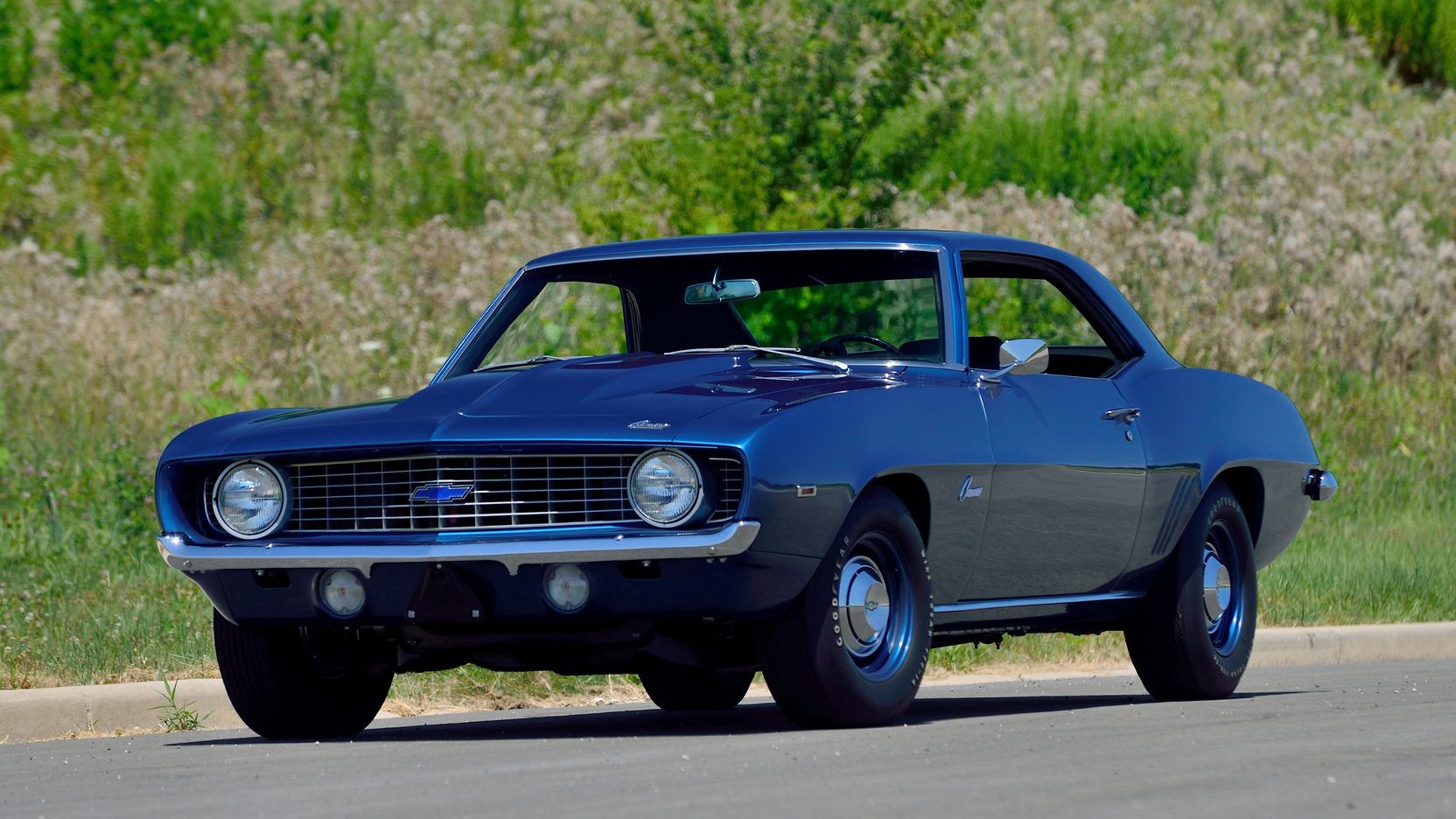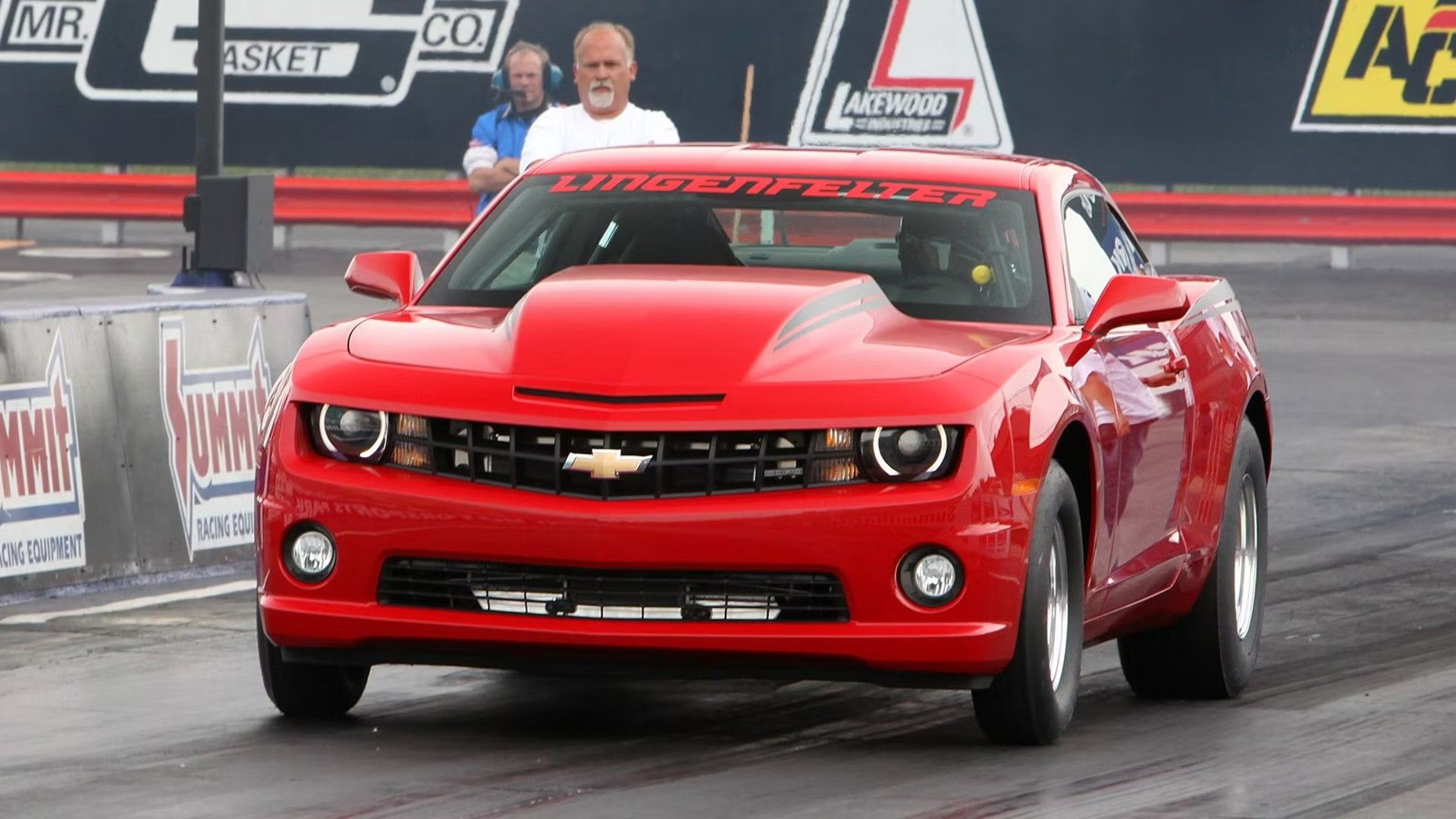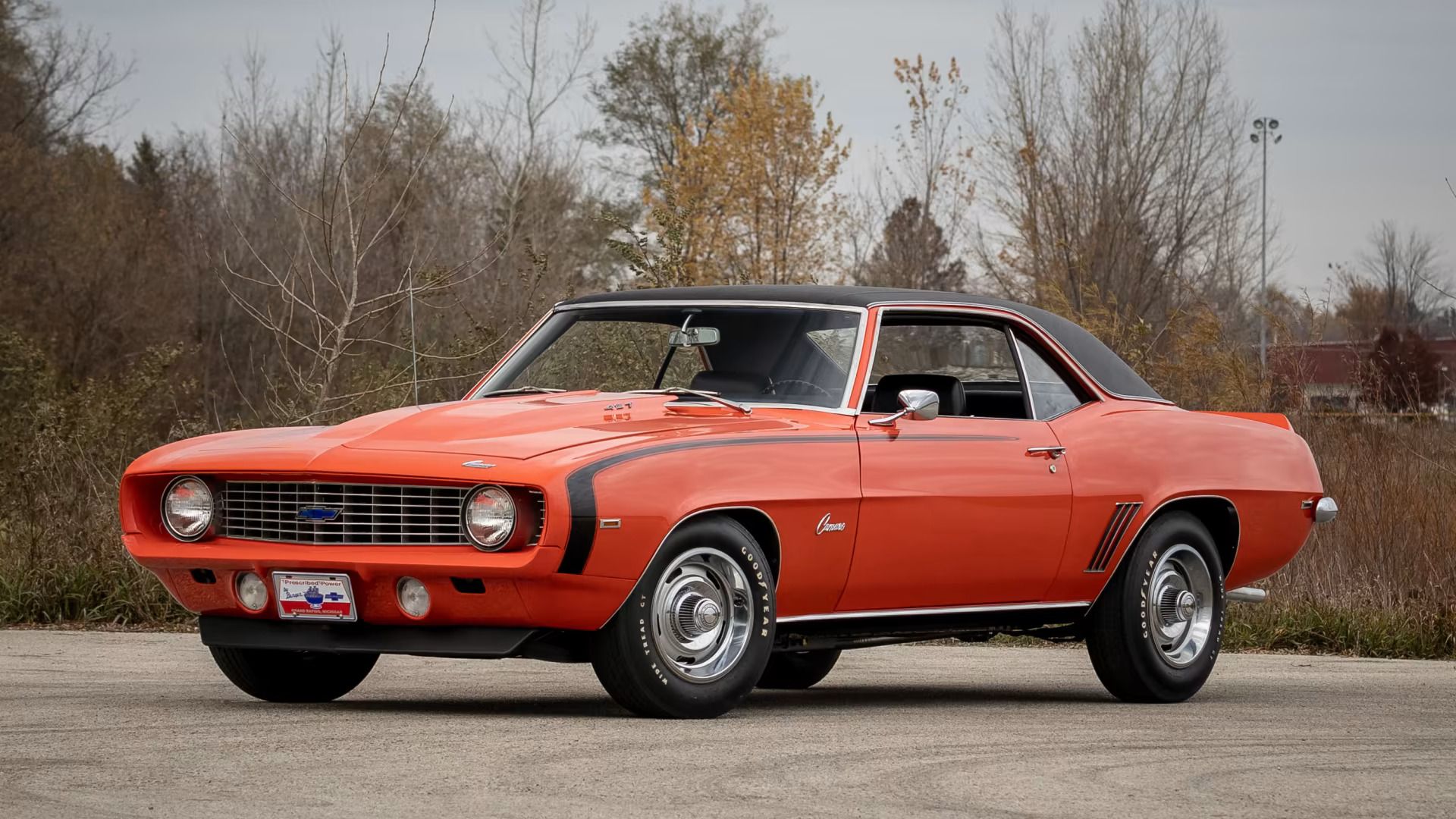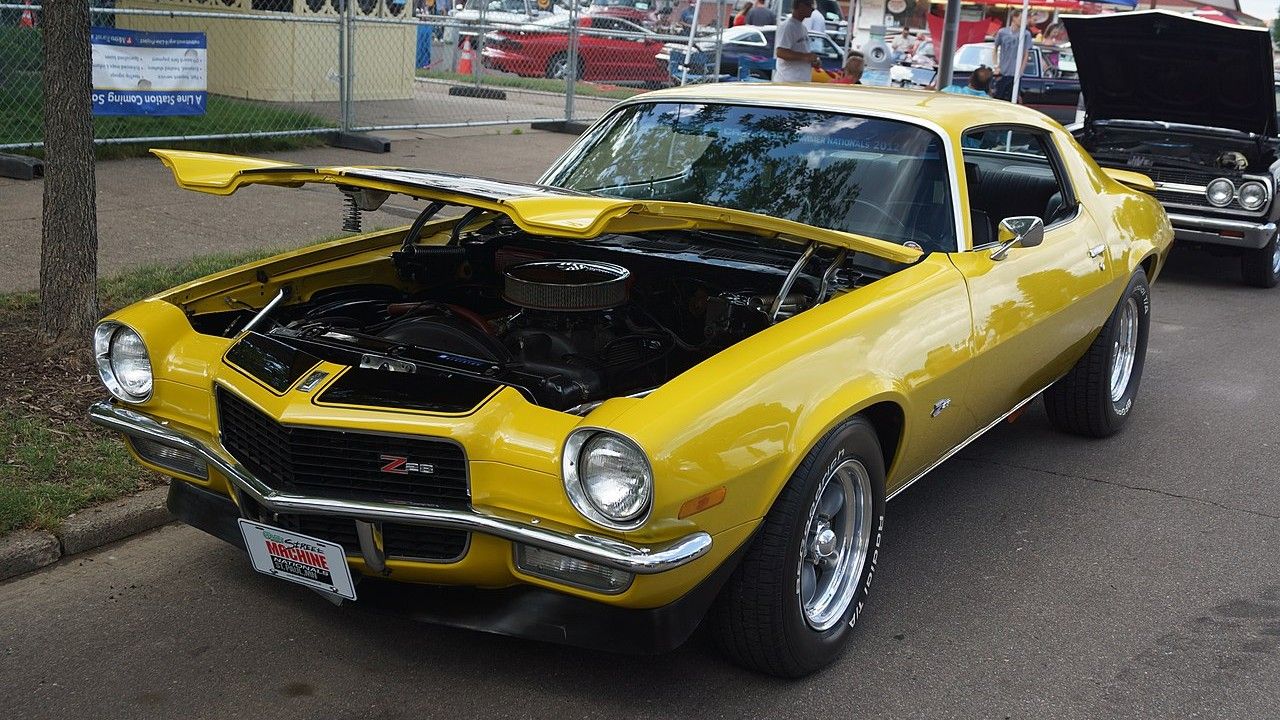Ford’s introduction of the sporty Mustang in the early 1960s shocked the car world. The move rattled General Motors, which had no car to compete with the Mustang (the Nova and Corvair were too dull). Therefore, GM approved the development of the Camaro, a car to rival the Mustang. The Mustang had a head start, prompting GM to fast-track the project - the first Camaro appeared in showrooms in 1966, two years after the Mustang’s arrival.
The Camaro was successful, performing admirably against its eternal foe for the next six decades. Following news that GM will discontinue the Chevrolet Camaro as we know it - a loud, fast, two-door, gas-powered muscle car - here are the rarest Chevy Camaros ever made.
We've looked up data from Chevrolet and reputed sites like HotCars, Motortrend, and Classic.com to put this list together on the Rarest Chevy Camaros Ever Made.
10 1993 Chevrolet Camaro Indy Pace Car
Production Numbers: 645 units
One of the main spectacles of the 1993 Indy 500 was the Camaro Pace Car, which had a white bottom half and a black top half. Separating the two colors were multi-colored ribbon decals, which also featured on the hood. Buyers of the 645 replicas built by Chevrolet got a similar color pattern on the vehicle’s front seats.
Specs and Performance
| Engine | 5.7-liter V-8 |
| Engine output | 275 horsepower and 325 pound-feet |
| Transmission | Four-speed automatic or six-speed manual |
| Drivetrain | RWD |
| Top Speed | 150 MPH |
Featuring a 5.7-liter 275-horsepower V-8, the 1993 Indy Pace Car was rapid. It needed to be fast to serve as a pace car in one of the iconic spectacles on the U.S. motorsports calendar. The car hit 60 MPH from naught in 5.6 seconds, 0.6 seconds faster than the lighter and less potent 1993 Ford Mustang Cobra. Flat out, the 1993 Camaro Pace Car could hit 150 MPH.
9 1967 Chevrolet Camaro Z/28
Production Numbers: 602 units
Chevrolet offered the 1967 Camaro with a Z/28 performance package. Created by Chevrolet engineer Vince Piggins, the Z/28 package imbued the Camaro with racing pedigree - the vehicle was one of several used by driver Mark Donohue en route to 10 wins in 13 races in the 1968 SCCA Trans-Am series.
Specs and Performance
| Engine | 4.9-liter V-8 |
| Engine output | 290 horsepower and 290 pound-feet |
| Transmission | Four-speed manual |
| Drivetrain | RWD |
| Top Speed | 124 MPH |
The Z-28 package featured a four-speed manual transmission, tuned suspension, racing stripes on the trunk lid and hood, 15-inch racing wheels, and power-assisted front brakes, among others. Chevrolet provided extensive customization options for the ‘67 Camaro Z/28, including pairing the Z/28 package with the RS package. However, none of the 602 Z/28 Camaros sold in 1967 featured an automatic transmission, air conditioning, or a convertible roof.
8 2020 Camaro 2SS 1LE
Production Numbers: 424 units
The Camaro 2SS featured a monster 6.2-liter V-8 engine producing 455 horsepower and an equal amount of torque, enough to propel the vehicle to a top speed of 180 MPH. To transform the 2SS into a vehicle capable of handling twisty tracks, Chevrolet offered the 1LE performance package. Valued at $7,000, the package converted the powerful and lumpy 2SS into a nimble track machine.
Specs and Performance
| Engine | 6.2-liter V-8 |
| Engine output | 455 horsepower and 455 pound-feet |
| Transmission | Six-speed manual |
| Drivetrain | RWD |
| Top Speed | 180 MPH |
Its wide and sticky tires enhanced grip, the upgraded front brakes improved stopping power, and the recalibrated suspension system improved stability. The 1LE package also featured interior and exterior enhancements. The 2020 Camaro 2SS 1LE is rare, considering Chevrolet sold 424 units.
7 1969 Chevrolet Yenko Camaro
Production Numbers: 201 units
Don Yenko built a reputation for being one of the best Chevrolet tuners in the U.S. In his workshop, he replaced stock Camaro engines with 7.0-liter V-8s from the Chevy Corvette. Yenko models were so popular that in 1969 Chevy agreed to partially build Yenko Camaros - the manufacturer installed the 7.0-liter engine and a conversion package featuring a front anti-sway bar, wide tires, and a 140 MPH speedometer.
Specs and Performance
| Engine | 7.0-liter V-8 |
| Engine output | 425 horsepower and 460 pound-feet |
| Transmission | Four-speed manual or three-speed automatic |
| Drivetrain | RWD |
| Top Speed | 140 MPH |
In 1969, Yenko modified and sold 201 Chevrolets - 171 had four-speed manual transmissions while the rest featured three-speed automatic gearboxes. Yenko claimed that Chevy Yenko engines produced 425 horsepower. However, dyno tests on new Yenkos produced horsepower figures above 550. Chevy provided 140-MPH speedos to accommodate the Yenko’s extra speed. However, Camaro Yenkos likely accelerated beyond 140 MPH.
6 1969 Chevrolet Camaro ZL1 COPO
Production Numbers: 69 units
The 1969 Camaro ZL1 COPO was the brainchild of Fred Gibb, who dreamed of racing the Camaro on drag strips. He reasoned that a Camaro equipped with a lightweight aluminum ZL1 V-8 would triumph over vehicles with heavier engines. Therefore, he petitioned Chevrolet via the COPO (Central Office Production Order) to build 50 1969 Camaros ZL1s for the public. The manufacture of 50 production cars allowed him to enter the ZL1 into drag racing competitions.
Specs and Performance
| Engine | 7.0-liter V-8 |
| Engine output | 430 horsepower and 450 pound-feet |
| Transmission | Four-speed manual |
| Drivetrain | RWD |
| Top Speed | 125+ MPH |
The 1969 ZL1 was a brilliant car: Besides having a powerful V-8, it featured a heavy-duty radiator, front disc brakes, 14-inch white-lettered tires, and a modified suspension. However, the ZL1 was a lot more expensive than its competitors. Contrary to Gibb’s expectations, Chevrolet didn’t shoulder the vehicle’s R&D costs. Consequently, the vehicle cost roughly $3,800 more than Gibb envisioned. Despite the car’s brilliance, Chevrolet made and sold only 69 examples before discontinuing the program indefinitely.
5 2012 Chevrolet COPO Camaro
Production Numbers: 69 units
The 1969 ZL1 Camaro’s showroom failure didn’t obscure the vehicle’s drag-racing prowess. As a nod to the ZL1 drag racer, the 2012 COPO Camaro drag car featured a naturally aspirated 7.0-liter V-8. Chevy also offered two supercharged 5.3-liter V-8s with the 2012 COPO Camaro. As with the late 1960s drag racer, Chevy built and sold only 69 2012 COPO Camaros.
Specs and Performance
| Engine | 7.0-liter V-8 or supercharged 5.3-liter V-8 |
| Engine output | 550 horsepower |
| Transmission | Powerglide two-speed automatic |
| Drivetrain | RWD |
The 2012 COPO Camaro was freakishly fast, regardless of the engine powering it. Traveling at 140-MPH, It blasted past a quarter-mile in 9.69 seconds. Unlike its ancestor, it was built solely for competition - General Motors required buyers to sign a contract declaring they wouldn’t drive it on the street.
4 2018 Chevrolet Camaro COPO
Production Numbers: 69 units
2018 marked the 50th anniversary of Chevrolet and Hot Wheels' collaboration - the ZL1 Camaro COPO was the first Hot Wheels model released in 1968. In 2018, Chevrolet introduced a naturally aspirated 5.0-liter V-8 to the COPO range. Equipped with the perennially present supercharged 5.7-liter V-8, the 2018 Camaro COPO could obliterate a quarter-mile in the mid-8.0-second range at nearly 160 MPH.
Specs and Performance
| Engine | Naturally-aspirated 7.0-liter V-8 and 5.0-liter V-8 and supercharged 5.7-liter V-8 |
| Engine output | 470- 650 horsepower |
| Transmission | Three-speed automatic |
| Drivetrain | RWD |
Like previous COPO models, the 2018 COPO featured modified suspension and chassis recalibrations to provide optimum stability during multiple high-speed runs. Chevrolet sold 69 2018 Camaro COPOs as it did with the original ZL1 COPO. In 2022, General Motors abandoned its tradition of selling only 69 COPOs per model year, allowing more people to purchase the vehicle.
3 1969 Chevrolet Camaro Berger Double COPO
Production Numbers: 40 units
The Chevy Camaro Berger Double COPO was another special Camaro built in 1969. It featured the ‘double’ moniker on its name because it featured two COPO packages. The first package, dubbed 9561, added a 7.0-liter V-8 engine rated by Chevy at 425 horsepower. However, the NHRA (National Hot Rod Association) rated the Corvette engine at 450 horsepower.
Specs and Performance
| Engine | 7.0-liter V-8 |
| Engine output | 425 horsepower |
| Transmission | Four-speed manual or three-speed automatic |
| Drivetrain | RWD |
| Top Speed | 140 MPH |
The second package, titled 9737 and known as the Sports Car Conversion package, added 15-inch Rally wheels, white-letter Goodyear tires, power front brakes, an anti-roll bar, and a modified suspension. Berger Chevrolet, a Michigan-based Chevy dealer, built 40 Double COP0s, 12 of which featured a four-speed manual gearbox.
2 Chevrolet Camaro Z/28 ‘Hurst Sunshine Special’
Production Numbers: 1 unit
The Hurst Sunshine Special Camaro was born after race Dick Jesse submitted his ‘70 Camaro Z/28 to Hurst for modifications. Hurst installed that dual-gate automatic shifter which enhanced racing by offering drivers greater control over gear changes. Hurst also installed a fabric sunroof on the coupe Z/28.
Specs and Performance
| Engine | 5.7-liter V-8 |
| Engine output | 360 horsepower and 370 pound-feet |
| Transmission | Three-speed automatic |
| Drivetrain | RWD |
| Top Speed | 118 MPH+ |
Chevrolet took over, using Jesse’s Z/28 to test the aerodynamic efficiency of the front and rear wings it intended to use on the Trans-Am racing series. After testing, Chevy painted the vehicle yellow and added black racing stripes. Three Hurst Sunshine Specials were built, but only one exists today.
1 1968 Camaro Z/28 Convertible COPO
Production Numbers: 1 unit
Engineer Vince Piggins designed the only Camaro Z/28 Convertible COPO to convince Chevrolet head Pete Estes to approve new parts for his Z/28 Camaros. Pete preferred convertibles over coupes. Therefore, Piggins ordered a regular 1968 Camaro Z/28 via the COPO system and modified it for Pete.
Specs and Performance
| Engine | 4.9-liter V-8 |
| Engine output | 290 horsepower and 290 pound-feet |
| Transmission | Four-speed manual |
| Drivetrain | RWD |
| Top Speed | 124 MPH |
The vehicle featured a stereo system, a folding rear seat, a unique steering wheel, power windows, and a rear window defroster, among others. The performance bits Piggins needed approval for included front and rear disc brakes, a performance suspension package, and a modified intake manifold. The plan worked: Pete okayed the upgrades and used the vehicle for a year. Chevrolet sold it without the racing parts Piggins had installed.

